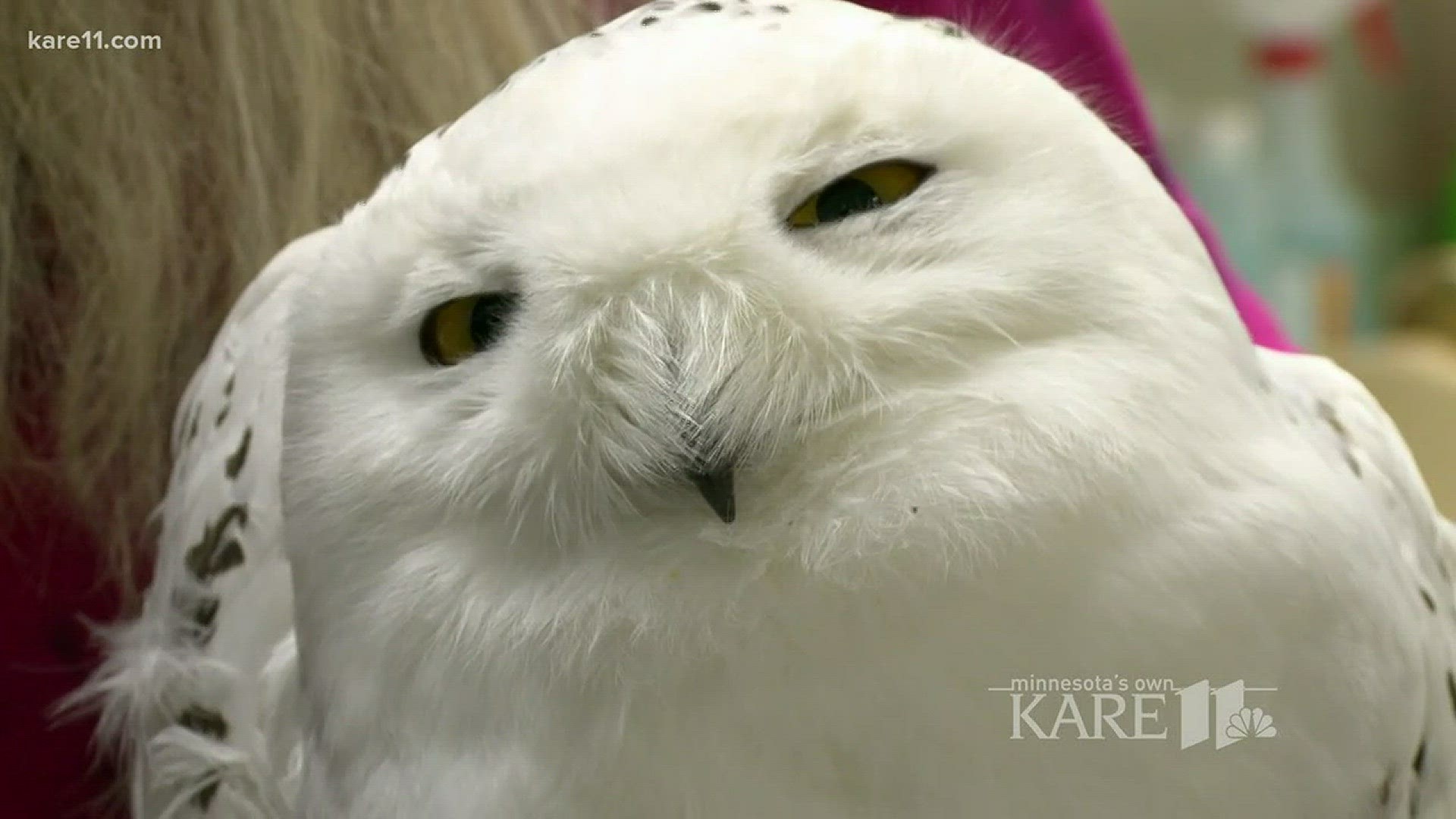FALCON HEIGHTS, Minn. - More snowy owls are appearing in Minnesota, an observation also being made in other states.
"This winter we're seeing what's called an irruption of snowy owls. And this is when there's a predator-prey imbalance up north and the young of the year, most commonly, will move south looking for food," said Julia Ponder, executive director at The Raptor Center at the University of Minnesota.
According to Ponder, these irruptions happen about every five to 10 years.
"They're not really regular but they're very cyclical and it has to do with the prey base, the lemmings up north," she said.
As more snowy owls are being spotted in Minnesota, The Raptor Center in St. Paul is also treating a record number of them.
"This year we've had record admissions of raptors in general. So we have had over 1,060 raptors admitted this year, injured and ill raptors," Ponder said.
According to Ponder, 27 of those patients have been snowy owls.
"Twenty-seven alive snowy owls is the most we've ever seen in one season. On a normal year, we'll get one or two, maybe three snowy owls," Ponder said.
The center is currently treating two snowy owls. One of those was getting examined on Tuesday morning. The owl, admitted Nov. 16, came from Grand Marais. Ponder said they don't know how he was injured but he was found with a broken wing.
"If a bird can't fly ... they can't hunt, they can't eat," Ponder said.
Several snowy owls have made the news in Minnesota in recent weeks.
One was found stuck inside a coffee roaster in Duluth. The bird was later treated and released by The Raptor Center. Another was struck by a car and then rescued from the grille by a Bloomington police officer. The snowy owl later died from its injuries.
According to Ponder, it's unfortunately common for snowy owls to not survive long after reaching the center.
"The challenge of snowy owls is that when they come down, it's the young of the year and they're looking for food and they don't recognize or they can't find food in this area. So often times, these birds are just one step away from death when they're finally recovered and most of them cannot survive," Ponder said.
The snowy owl from Grand Marais did receive some good news on Tuesday. A radiograph showed the bone had healed. He will be moved to a flight room to stretch his wings and will eventually be released up north.
With a greater possibility of seeing a snowy owl in the wild, Ponder warns people about interacting with them, saying that you're too close if a bird is moving or responding to your presence.
She said, "They're fascinating to see in the wild. We just ask that people be aware and not be invasive to them."

